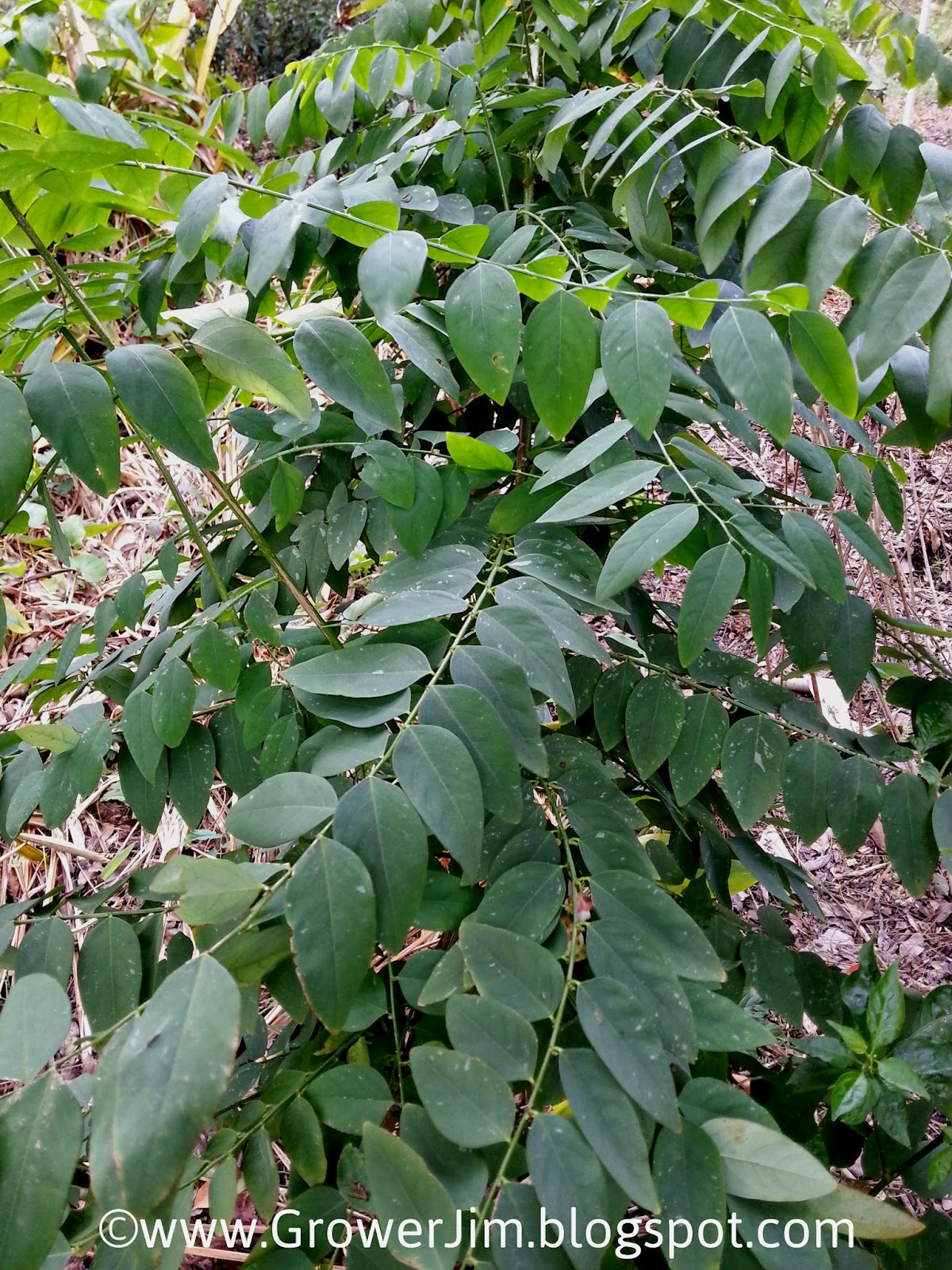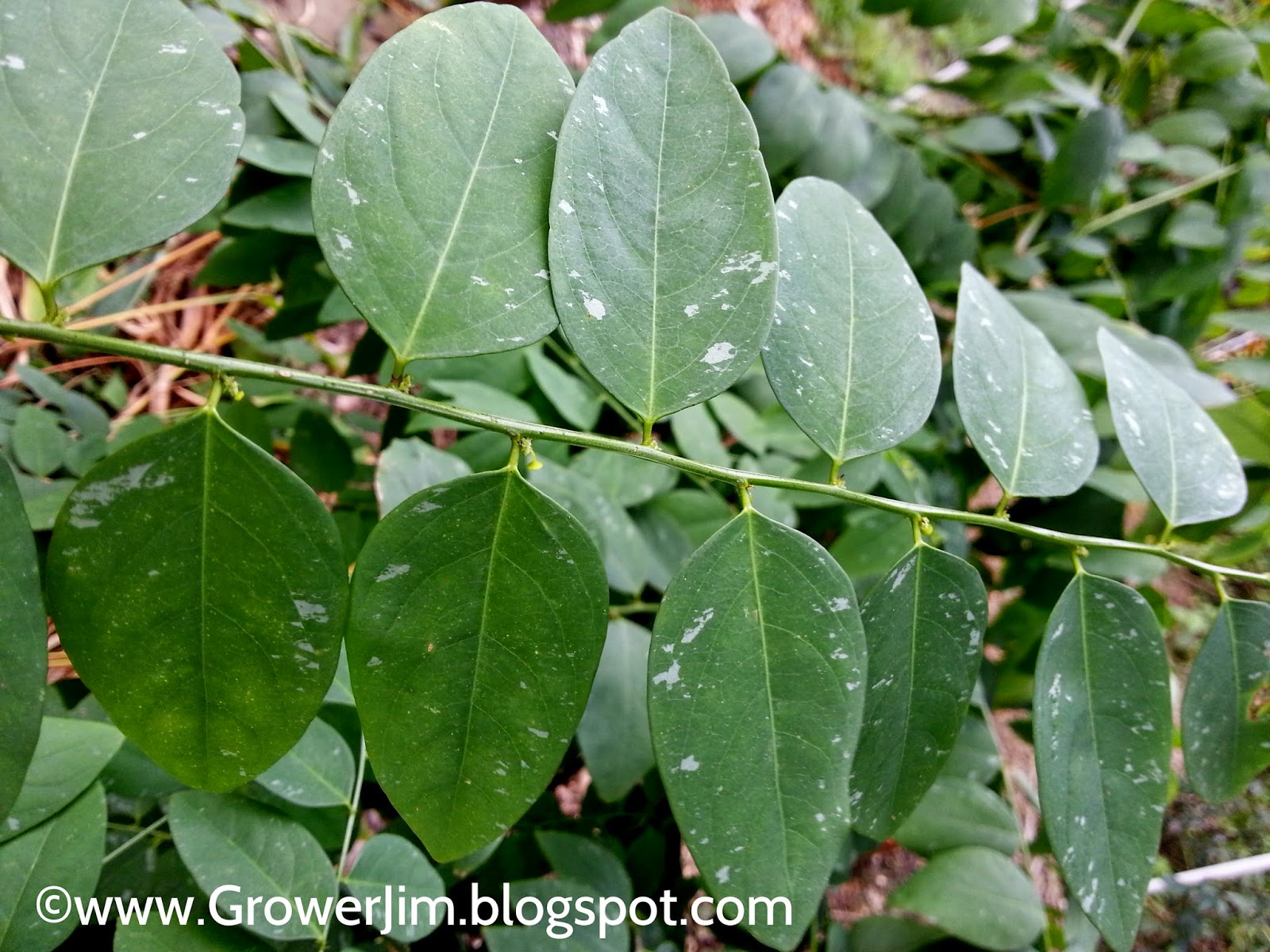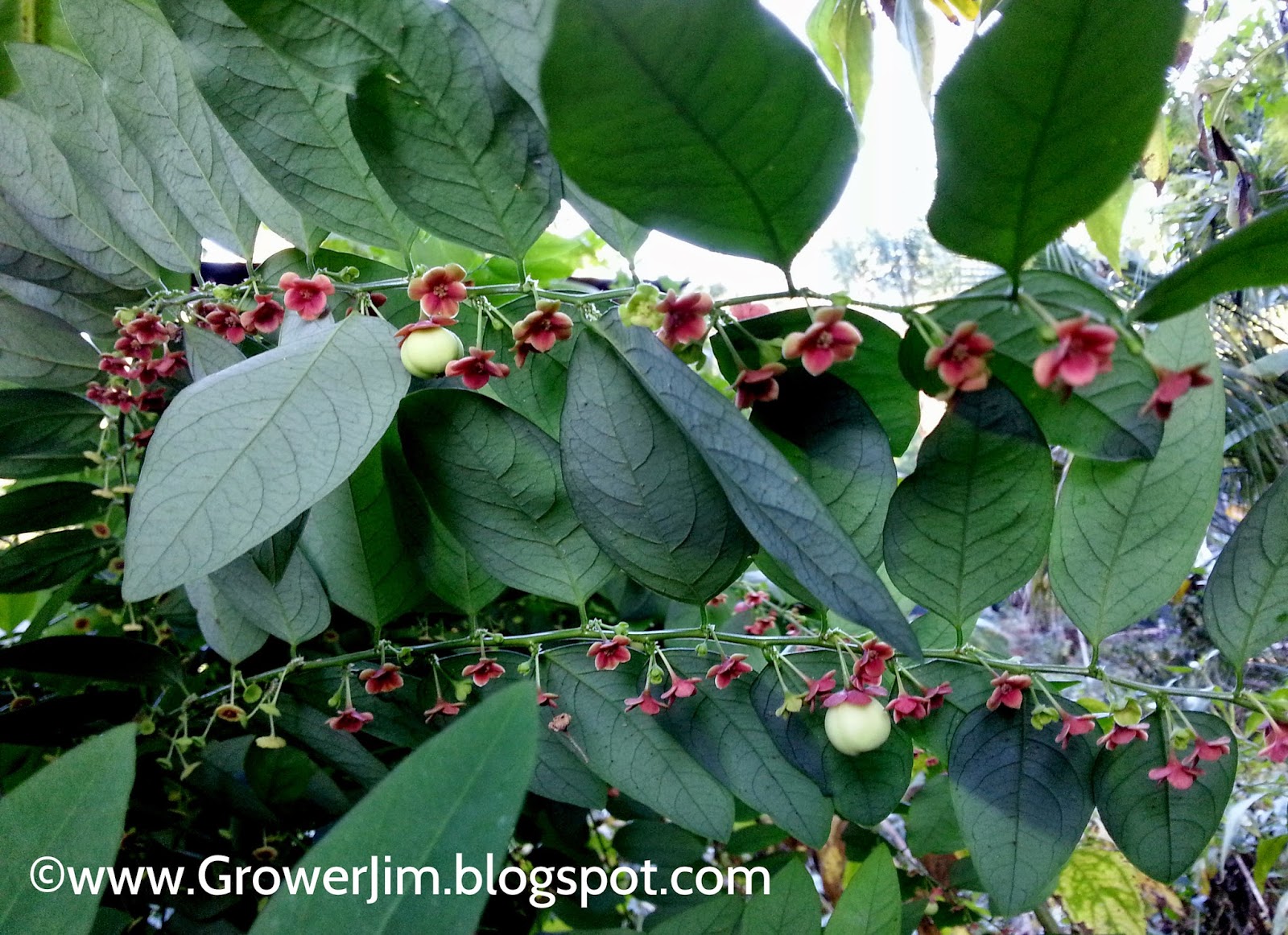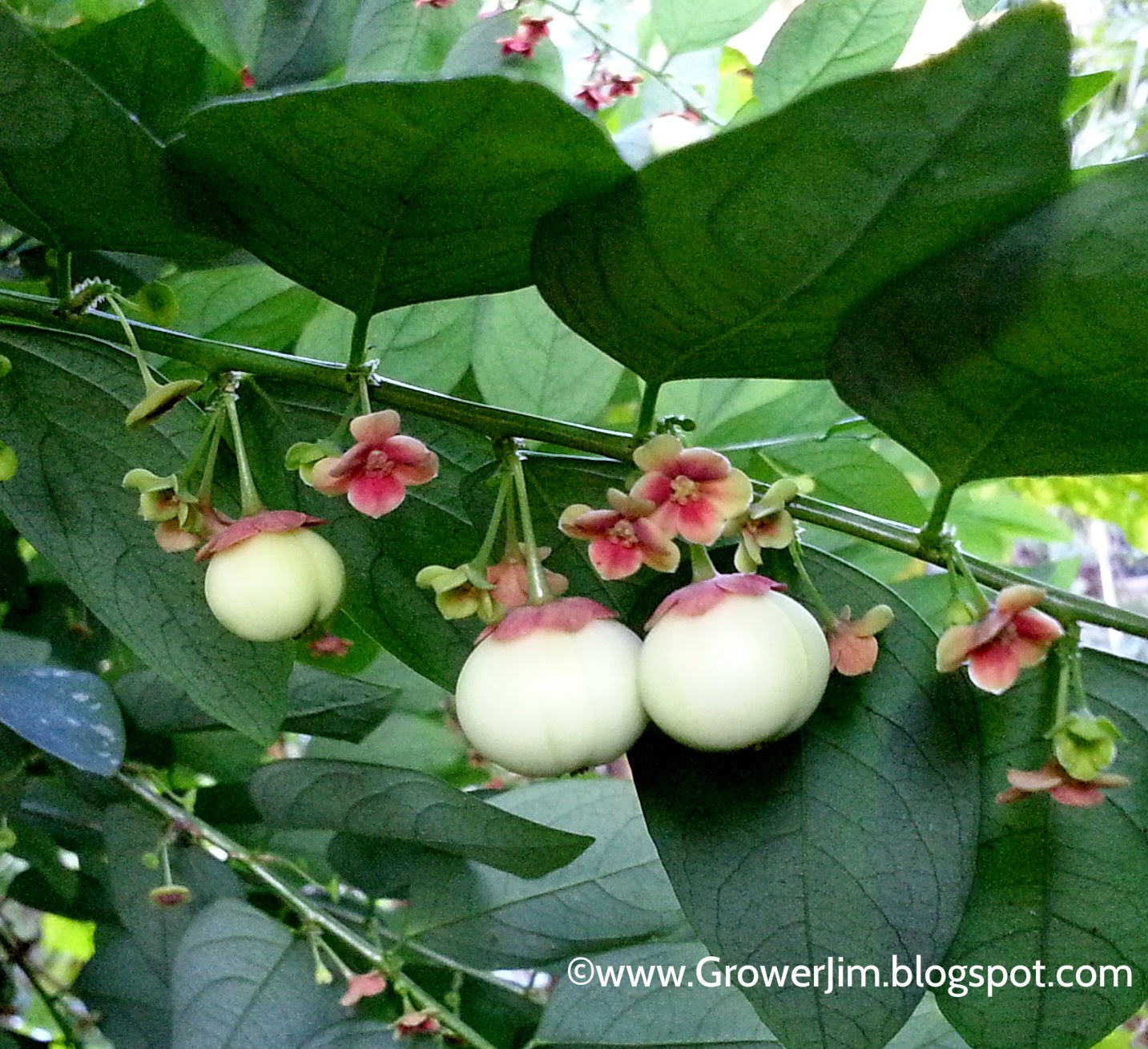Katuk is an edible leafy shrub that thrives in tropical or subtropical climates. It's botanically known as
Sauropus androgynus.
Nearly all parts of the plant can be eaten raw or cooked. The leaflets are easily stripped from the petioles and added to salads, sandwiches, soups or stir-fries. Tender young shoots are usually steamed, and the flowers and fruits can be added to salads or vegetable dishes.
The leaves are very nutritious. Compared to spinach, katuk has 10x the protein, 20x the vitamin C, 6x the iron and 3x the calcium!
The pinnate leaves can reach up to 2 feet in length, and the overall plant height can be 6-7 feet or more if not kept cut back. The tall, thin stems seldom branch and easily fall over in wind or heavy rain. It's best to keep them cut back to 3-4 feet in height to form a more sturdy bush. The trimmed parts can be eaten.
Some cultivars show a silvery mottling on the leaflets that may be randomly scattered or in attractive patterns, depending on the individual plant.
Katuk prefers a little shade in hot climates, but will grow in full sun as long as the soil is kept moist. An evenly moist soil is also conducive to faster, more lush, growth.
The unusual flowers form on the underside of the leaves in the spring and fall. The fruits develop quickly after pollination.
Some cultivars may require cross-pollination with another cultivar in order to set fruit. Others appear to be self-fertile. The fruits are creamy-white, marble-sized balls that hang from the leaf on a short stem.
When fully mature, they split open to reveal up to 6 black angular seeds.
For propagation, the seeds should be sown immediately, and usually take at least 2-3 months to germinate.
Katuk is native to Borneo, and is recommended for USDA Zones 9b-11. Elsewhere, it can be container-grown and protected from the cold.
Sauropus androgynus is also sometimes known as Sweetleaf or Cinnamon leaf.











